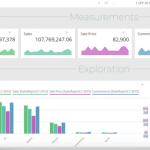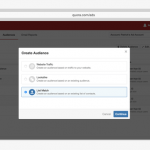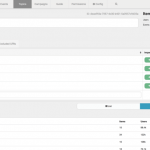Commerce Signals and PlaceIQ turn in-store sales data into campaign optimization tool
Data will help marketers understand which campaigns are delivering in-store sales most efficiently, at the lowest cost.

Commerce Signals and PlaceIQ today announced a partnership that will deliver in-store sales data to PlaceIQ customers (agencies and brands). The new offering from Commerce Signals is called “Databridge,” and it provides purchase data from Visa (Advertising Solutions) and related insights for marketers.
What’s significant is that the anonymous transactions data can be delivered within 72 hours to enable it to be used as part of campaign optimization. This offers another layer of insights that can help brands and retailers do better media planning and optimization.
PlaceIQ, among multiple others now, uses location and store visits as a tool to identify and segment audiences and deliver offline attribution insights. Store sales data goes one step beyond this to show the tactics, channels or campaigns that actually motivate buying behavior. Notwithstanding Cyber Weekend’s big numbers, more than 90 percent of retail sales happen in stores, and the vast majority of service-related transactions are offline as well.
PlaceIQ’s EVP Nadya Kohl said that the company isn’t replacing store visits with transactions data. She said, however, that transactions represent the “next generation” of attribution information. Kohl explained that the additional data enables new insights and analysis. For example, marketers will be able to understand which campaigns delivered visitation without conversion — why people may have come into a store but not bought, a real-world version of “shopping cart abandonment.”
There will also be corresponding audience insights: which groups or types of individuals saw the campaign and purchased? That, in turn, can fuel look-alike audience campaigns later online. Kohl added that marketers will also be able to improve retargeting because they can eliminate people who actually bought things in stores from seeing the same ads subsequently.
Adam Paulisick, CPO, Commerce Signals, stressed the media planning implications of the data. He said that marketers will be able to see which campaigns or tactics were delivering in-store sales most efficiently, at the lowest cost. Paulisick also stressed that his company is trying to help remove the complexity from the data analysis and provide actionable, accessible insights to marketers who aren’t data scientists.
In addition to Visa, Mastercard also licenses its transactions data to marketers and other third parties for similar use cases. Google has a similar capacity to access store transactions via third parties and has been testing this for some time. However, the company hasn’t announced any new capabilities recently beyond the expansion of store visits measurement.
All of this should be seen in the context of the increasing importance of offline and location data as a kind of general tool or real-world cookie to enable holistic campaign targeting and performance insights. Accordingly, we’ll see more transaction data being integrated into analytics tools to enable offline transaction-based optimization in the year ahead.
Marketing Land – Internet Marketing News, Strategies & Tips
(29)













